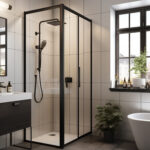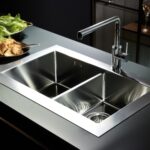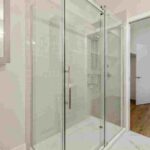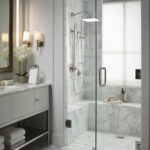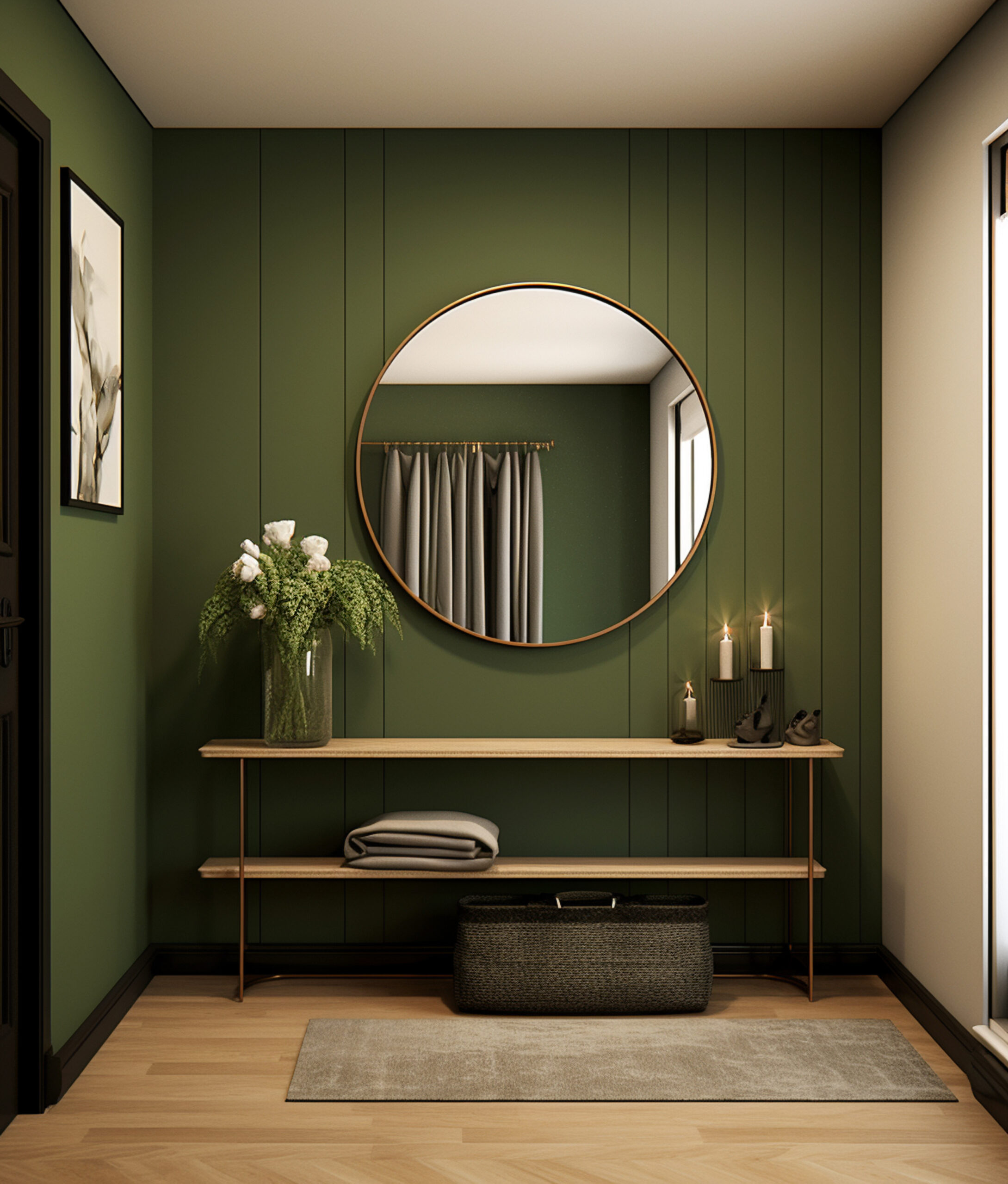Who Invented the Flush Toilet?
Who invented the flush toilet? Nobody thinks about it. This is why the flushing toilets of the 21st century haven’t changed much since it was first patented in 1775 by Alexander Cumming, a Scottish watchmaker. Cumming’s toilet was a slightly altered “water closet” designed for Queen Elizabeth I by her godson Sir John Harrington in 1592 — Cumming’s has an S-shaped pipe to trap odors, while Harrington’s design had nothing to cover the odor. Of course, self-flushing toilets, heated seats, vacuum potties, and tour buses were invented later.
What is a Siphonic Toilet?
A siphonic toilet has a long and narrow ‘P’ or ‘S’ shaped trap way. Which ends in the inlet of the bowl, and the other connects to the drainpipe. This trap-way design creates a siphon. Pulling the lever opens and lets the tank water flow into the bowl. The water quickly rises and sinks in the toilet bowl. The Water flows faster from the tank and exits the bowl immediately. It occurs due to the larger flush valve diameter than the drainage pipe. While siphonic toilet are considered to be modern, washdown toilets are similar to vintage-style toilets.
When water exits through the drain pipe, displacing the air inside the trap way or drain pipe creates a vacuum. When it flows in a trap way, the siphon begins to work. Decreased water in the toilet bowl indicates the same. Some siphonic toilet creates a swirl, but the working principle is the same.
This swirl is because of the toilet bowl siphon in the Siphonic toilet. It’s like a gentle push that uses the minimum energy of water. It maintains the water level and cleans the toilet bowl properly.
It’s like a gentle push that captures the optimal action of water by using a minimum of energy. The siphon, at its ideal state, is so strong that all the heavy solid waste gets sucked out with the water.
The siphon is strong enough to suck the heavy solid waste with the water. At the end of a flush, there is a babbling sound. It happens when the vacuum is, and the siphon is stopped. The bowl then gets filled with leftover water and the tank refills for the next flush. The above information is the answer to what is a siphonic toilet.
The washdown toilet pan is the base of the toilet that connects to the drainage system. A washdown toilet uses the gravity of water to push waste from the water bowl to the drainage system. In a washdown toilet, the water pours from the tank in the bowl pushing away the waste. This type of toilet uses a washdown flush system.
It only “pushes” and does not evacuate the bowl. These toilets have small water surface areas in the bowls that are deep down in the bowl.
Siphonic vs Washdown toilet
A debate in countries like Germany, Russia, and Colombia is always there for these types. It is because the toilets are well preferred in both countries. As discussed above, they both use different types of toilet flush systems. These toilet flush systems include a Washdown toilet flush system and a Siphonic toilet flush system. Different systems have different toilet flush problems.
These toilets differ in many factors, such as bowl size, Water usage, trapway, spare parts, maintenance, cleaning, odor control, whole toilet size, and comfortability. These qualities run neck and neck in both types of toilet systems, and the decision of siphonic vs washdown toilet is difficult to conclude. However, we will see all the above qualities for both toilet systems. Washdown toilets are similar to vintage-style toilets.
Bowl size
The bowl sizes of the best washdown toilet seats and siphonic closet bowls are different. These sizes are according to the water action inside these bowls. Typically, the best washdown toilet bowl size is 4”x 5”, where 4” is the diameter. The size of a double siphonic toilet bowl is 7.5″ to 10.5″. The size of the siphonic bowl is larger than the washdown toilet bowl. The washdown toilets have a smaller space because the working of washdown toilets uses the gravity of water to push the hard waste into the trapway. The double siphonic toilet bowl uses a vacuum and creates a siphon to pull the waste into the trapway.
Water usage
The water usage in a washdown toilet is much less than in a siphonic toilet. Since the washdown toilet just uses water to push the waste in the trapway. The siphonic toilet uses water to create a vacuum and move the waste inside the trapway. The Washdown toilet has a dual flush where the water usage is 3 or 6 gallons per flush, and the siphonic flush requires 6 gallons of water per flush. The Dual flushing is not for siphonic toilets.
Trapway
Trapway is different in both washdown and siphonic toilet. It is because of the flush water actions difference. The trapway of the Siphonic toilet is “S” or “P” shaped to create a good siphon. The trapway of a washdown toilet is short and wide. However, the trapway in a siphonic toilet is narrower, and there are chances of clogging. The surface area of a washdown toilet trapway is larger than a siphonic toilet trapway.
Odor control
The Odor of waste remains controlled in a siphonic toilet system. Washdown toilets are less preferred in countries like Germany, Russia, and Colombia. Because of their lack of odor control. As we know, the siphonic toilet creates a vacuum hence getting rid of the odor. This characteristic depends on the types of toilet flush systems used in different toilets.
Whole toilet size, Maintenance, and Cleaning
The size of a washdown toilet is more compact than a siphonic toilet. Due to the “S” shaped trapway of siphonic toilet, the size of the set becomes bigger. The maintenance of both systems is somewhat similar. The washers of both systems need replacements. The float valve and flush valve rarely need to be replaced. However, the flush buttons’ and levers depend on their quality. The cleaning of these toilets depends on the number of holes from where the water comes down. This is mainly because these holes leave watermarks in the bowl. People from countries like Germany, Russia, and Colombia use toilet brushes as an accessory for cleaning with the plunger for clogging.
Advantages of Siphonic Toilets:
The siphonic toilet, also known as siphonic jet toilet, has a powerful flushing performance with its toilet bowl siphon, odorless environment, and water-efficient design. Siphonic toilet have a unique trapway design and pressure-assisted flush system to create a powerful suction effect. This powerful flush reduces the clogs and creates a clean and hygienic toilet experience. Hence, another term for a siphonic toilet is a Siphonic jet toilet.
Best siphonic toilets are known for their water efficiency. Due to the siphon jet mechanism, it has a complete flush with as little as 1.28 gallons per flush (GPF) compared to 3.2 GPF of washdown toilets. This reduces water bills and helps the environment. The siphon jet action creates a smooth flush and minimizes noise. Siphonic toilet are generally quieter making them suitable for bathrooms in bedrooms, apartments, or households with noise sensitivity.
Siphonic toilet are compact, making them a good choice for smaller bathrooms. The trapway in siphonic toilet is located at the back of the bowl, allowing for a more streamlined and compact shape compared to washdown toilets. Siphonic toilet have a variety of styles and designs, allowing homeowners to choose one that complements their bathroom décor. They are often available in modern and contemporary styles, with sleek lines and hidden trap ways, enhancing the overall aesthetics of the bathroom. The toilet flush parts are fewer and rarely need replacement.
Disadvantages of Siphonic Toilets:
Siphonic toilet typically have a high initial cost compared to washdown toilets. This is reasoned by their complex design and manufacturing process. Siphonic toilet require more maintenance than washdown toilets. The siphon jet mechanism and trapway require cleaning for proper operation and clogging prevention. Siphonic toilet problems include clogging.
A siphonic closet is not compatible with the older plumbing configuration. The siphon jet mechanism requires a specific drainpipe and venting system to function properly. The siphonic toilet flush parts have a complex mechanism. Siphonic toilet problems are very few but they should be considered. There are very few toilet flush problems in siphonic systems.
Orton Baths: A great option for Siphonic toilets
The Orton baths have a large range of siphonic toilet. These toilets are different based on shape, one piece or two piece. These are available in countries such as Colombia, Russia, Germany, Australia, America etc. These toilets are silent and very effective. These toilets save a lot of water and have an effective flush. The siphonic toilet create good odor control and make a pleasant bathroom environment. Orton baths have some of the best siphonic toilets.
These toilets are also customized according to different parts of the world. There are options to apply a filter for Middle Eastern regions, European regions, African regions, Southeast Asia, South America, and the USA. The Siphonic toilet are practical, budget-friendly, low-maintenance, and easy to clean ( if cleaned regularly).
Conclusion
The advantages and disadvantages of both Siphonic and washdown toilets are listed above. The above article explores two of the most liked toilet systems in many countries like Germany, Russia, and Colombia.
Must Check:https://ortonbaths.com/what-exactly-is-a-washdown-toilet-pan/
Must Check:https://ortonbaths.com/which-two-piece-toilet-is-the-most-resistant-to-clogging/



